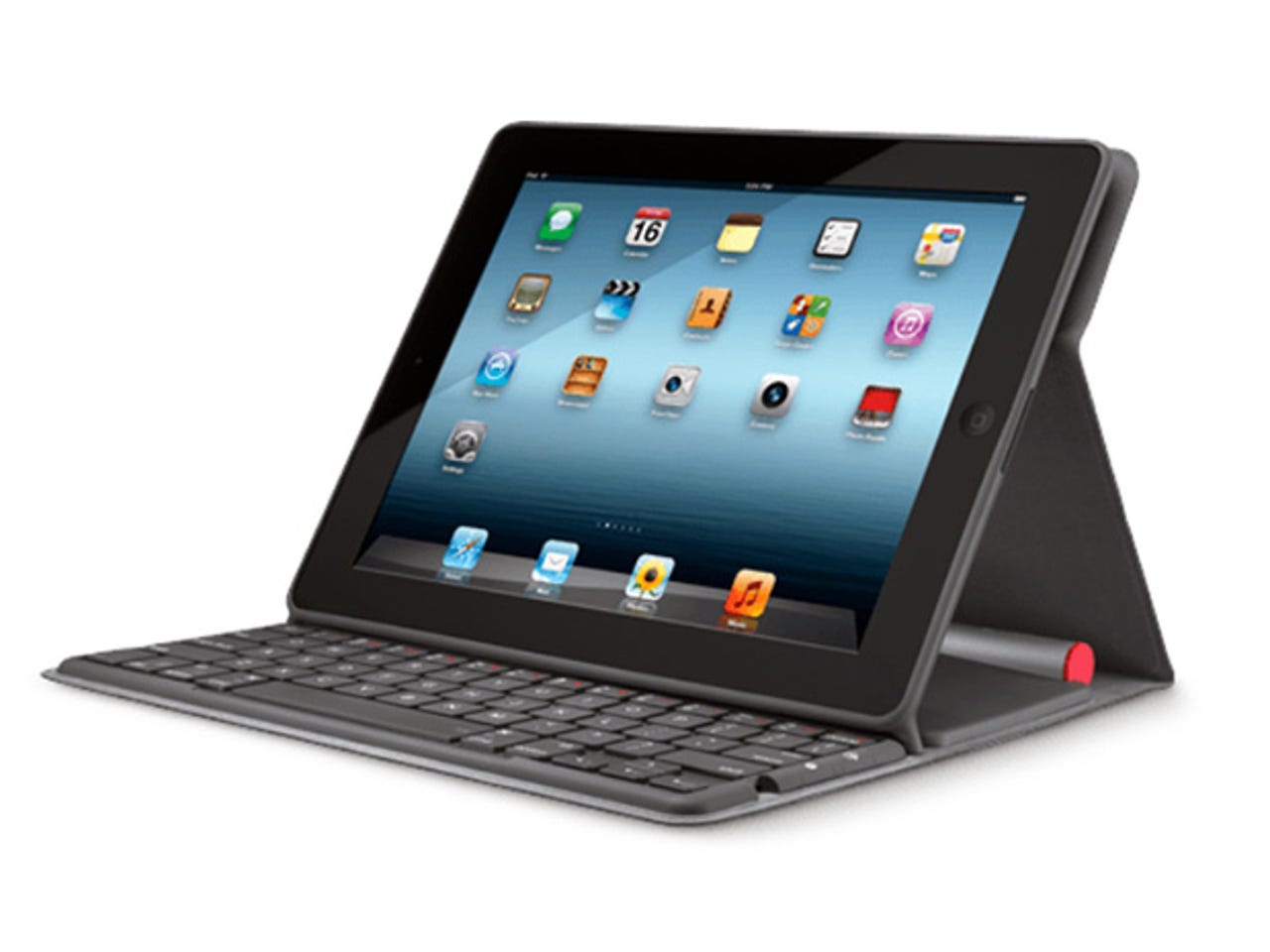Logitech Solar Keyboard Folio for iPad: Useful but flawed

It sounds like a great idea: a keyboard case for your iPad that never needs batteries because it gets power from ambient light. Logitech's £119 (inc. VAT) Solar Keyboard Folio does deliver all that, but it has some drawbacks as well.

For one thing, it manages to be both flimsy and heavy, thanks to the solar panels/battery unit that acts like a spine. And while thin, the Solar Keyboard Folio is not particularly sleek; the form-fitting grey rubber interior and grey plastic keys aren't as appealing as the soft-touch, easy-grip rubberised black outer case. It's easier to slide your iPad into the rubber enclosure (the case fits iPad 2 and 3 models) than to prise it out, and it holds your tablet firmly in place. The solid base makes it easy to balance your iPad on your knee in most positions. However there's no latch to hold the case closed in your bag.
The keyboard doesn't match the best Logitech keyboards we've tried before. The keys have decent travel and although small they're reasonably well spaced. We typed this review at the typing speed we're used to on a notebook PC with only a few typing errors, but the keys have a clicky plastic feel. They also have a confusing number of function keys: universal keys like the browser and the virtual keyboard are highlighted in red on the number key row and in grey on the command key row.
That's because you can use the Folio both as a keyboard and as a media case. Usually you slot the two pegs that hold your iPad up behind the keyboard, but you can also a lot them into two holes that leave only the bottom row of keys exposed. That gives you media control keys plus the keys for the virtual keyboard and built-in slideshow screensaver. However, the on-screen media controls on the iPad are so well designed that this seems a little redundant. (Remember that you can't legally use Bluetooth on a plane, so turn Bluetooth off on your iPad and stick to using the Folio as a stand.) Like the keys, the pegs feel rather plastic although they held the iPad securely during our testing.
And if you're wondering why you need a physical button to turn on the virtual keyboard, that's presumably so you can get obscure symbols like the euro that aren't on the physical keyboard.
The flimsiness and slightly cheap feel of the keyboard aside, this works well as a Bluetooth keyboard. It's easy to pair — if you've not paired it with an iPad before, it puts itself into pairing mode automatically when you open the keyboard. You can also use the case to turn your iPad on and off automatically as you open and close it.
If you want to use it with a different iPad you can press the Bluetooth button to start pairing and there's a power button to check how much charge you have in the battery that the solar panel keeps topped up.
That's another design decision that feels less than ideal. Oddly, the solar panel is on the bottom of the Folio case. That makes sense because its weight counterbalances the weight of the iPad and stops it tipping over. But it means that it's not getting the six hours of light it needs to stay fully charged while you're actually using it, unless you have it balanced on your knees in a way that exposes the solar panel. if it's on a table, you'll have to wait until you stop using your iPad to top up the keyboard. The Folio doesn't need daylight; it will charge from your normal indoor lighting and a six-hour charge should last quite some time.
Unlike Microsoft's Surface, which can power a Type or Touch Cover through the magnetic docking port on the base, this is the only way to get a keyboard for the iPad that doesn't need its own charging cable. But this is a pricey way to avoid the inconvenience of remembering to charge a keyboard, and the design doesn't make you feel the price is justified.